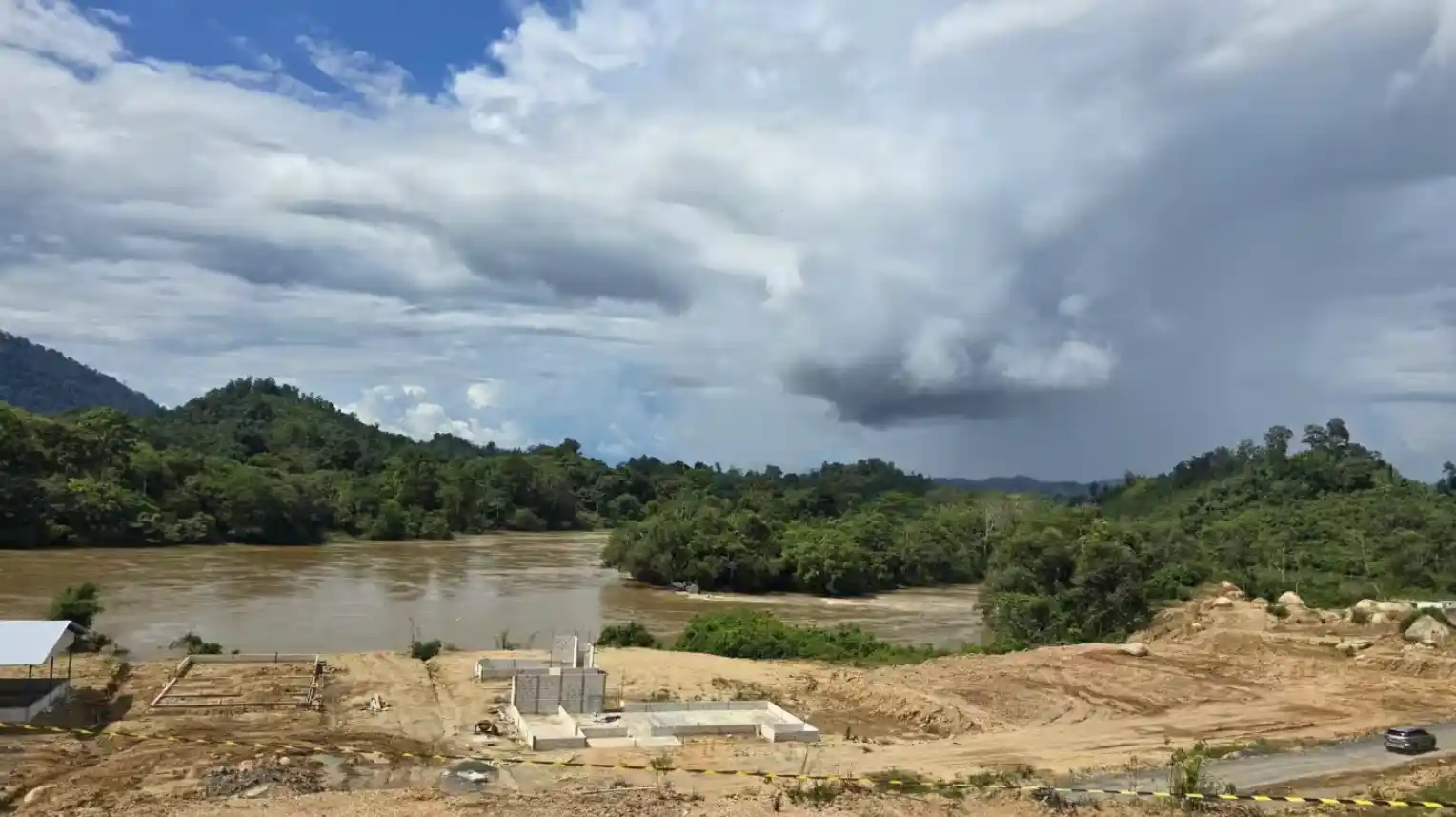OMNI Features|KHE's Indonesia Kayan Cascade Hydropower Project Seeks New Partner.IMF: Fossil Fuel Subsidies Reach a Record $1.4 Trillion in 2022.Prospects of 23 GW Solar Capacity in the Middle East by 2024
OMNI Features|KHE's Indonesia Kayan Cascade Hydropower Project Seeks New Partner.IMF: Fossil Fuel Subsidies Reach a Record $1.4 Trillion in 2022.Prospects of 23 GW Solar Capacity in the Middle East by 2024

A construction site for the Kayan Cascade hydropower project in North Kalimantan province, Indonesia. As of May 30, the physical construction of the dam has yet to start.
(Source: Nikkei Asia|Photo by Erwida Maulia)
| KHE and Sumitomo Agreement Terminated: Indonesia Kayan Cascade Hydropower Project Seeks New Partner
Indonesian company Kayan Hydro Energy (KHE) is exploring new potential partnerships after its agreement to jointly develop a large hydroelectric station on Borneo island with Japanese trading house Sumitomo Corp. reached a stalemate.
The cooperation between KHE and Sumitomo for the development of the Kayan Cascade project in North Kalimantan province, in the Indonesian parts of Borneo, was announced in October 2022. The project includes plans to construct five dams on the banks of the Kayan river to produce a total of 9 gigawatts of electricity, which would make it the largest hydropower station in Southeast Asia if completed. Sumitomo has invested 270.9 billion rupiah ($16.7 million) in KHE, according to a legal document. According to KHE, the company hopes to complete the first phase of the Kayan Cascade project by 2029. Due to delays in negotiations, both parties have decided to terminate their partnership.
The Kayan Cascade project was initiated over a decade ago. Due to the restrictions imposed by the COVID-19 pandemic, KHE's former Chinese partners, including PowerChina, withdrew from the project, resulting in years of delays. The project's first phase is estimated to cost between $3 billion and $4 billion, with the total cost for all 5 phases projected at $17.8 billion. The previous target was set for completion by 2035; however, this target may be postponed due to a lack of investors.
|IMF: Fossil Fuel Subsidies Reach a Record $1.4 Trillion in 2022
Fossil fuels benefited from record subsidies of $13m (£10.3m) a minute in 2022, according to the International Monetary Fund, despite being the primary cause of the climate crisis.
The G20 nations, which cause 80% of global carbon emissions, pledged to phase out "inefficient" fossil fuel subsidies in 2009. However, the G20 poured a record $1.4tn (£1.1tn) into fossil fuel subsidies in 2022, according an estimate by the International Institute for Sustainable Development (IISD). The World Bank reported in June that fossil fuel and agricultural subsidies combined could amount to $12tn (£9.5tn) a year and were causing "environmental havoc".
The IMF analysis found the total subsidies for oil, gas and coal in 2022 were $7tn (£5.5tn). That is equivalent to 7% of global GDP and almost double what the world spends on education. Countries have pledged to phase out subsidies for years to ensure the price of fossil fuels reflects their true environmental costs, but have achieved little to date.
|Prospects of 23 GW Solar Capacity in the Middle East by 2024: Emerging as the Main Driver of Energy Transformation
Solar power is expected to drive the energy transition in the Middle East region, with the sector expected to reach nearly 23 gigawatts (GW) in 2024, after exceeding 16 GW in the previous year, according to Rystad Energy.
Rystad Energy's report indicates that solar power has become the primary renewable electricity source due to various factors, such as being the most cost-effective. In regions like Saudi Arabia, the United Arab Emirates, and Oman, photovoltaic solar panels can achieve over 2,000 kWh of high solar irradiation per square meter annually. By 2030, the region's solar capacity is expected to surpass 100 GW, with green hydrogen projects accounting for an annual growth rate of 30%.
Currently, fossil fuels comprise 93% of the region’s total power generation at the end of 2023, followed by renewables at 3%, nuclear and hydro at 2% each. Natural gas, meanwhile, accounted for almost 75% of its electricity generation.
Reference: Nikkei Asia|TheGuardian|Energy Box
